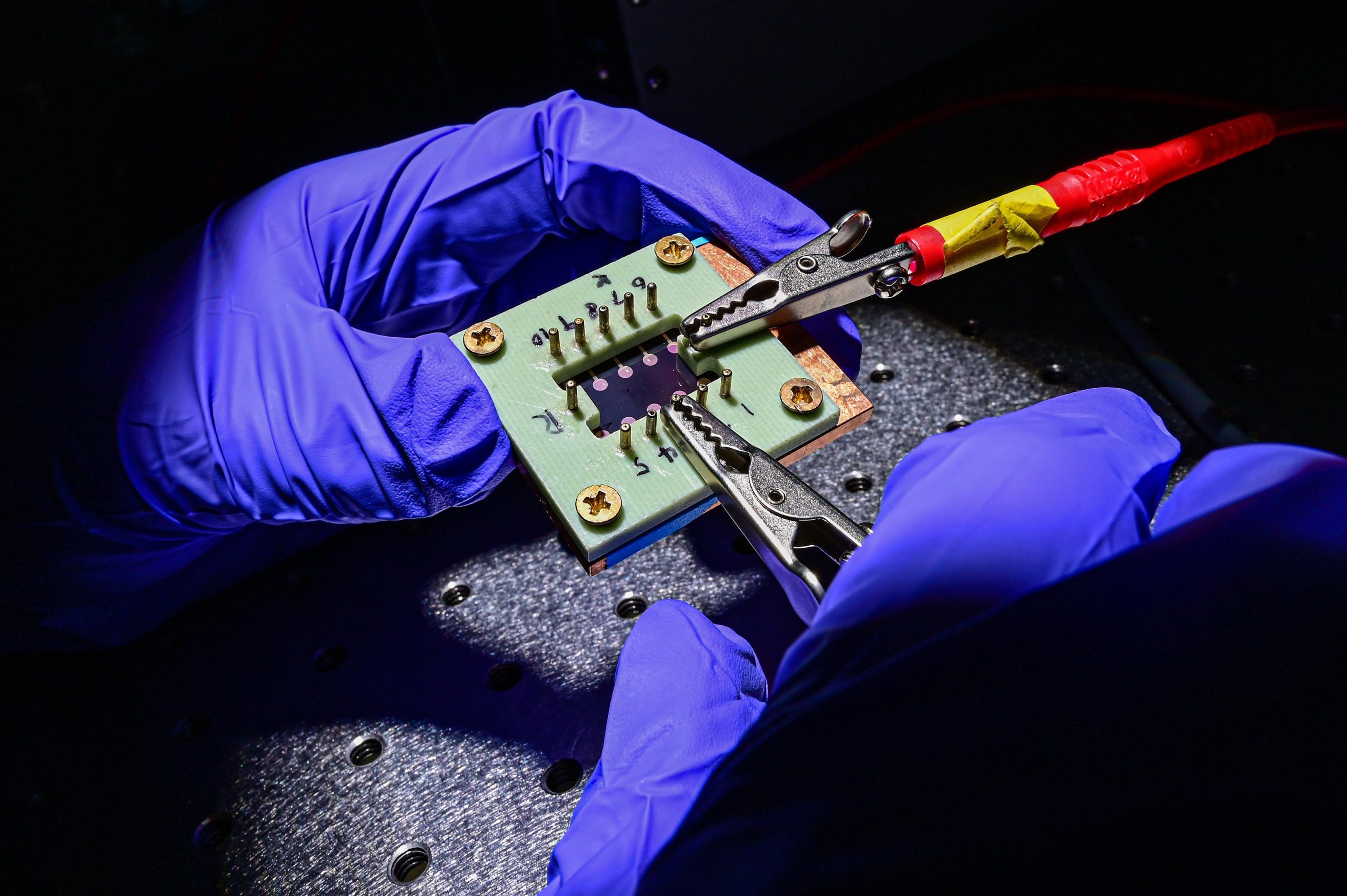
Engineers at Rice University raised the photovoltaic efficiency of 2D perovskites by up to 18%.
Credit: Jeff Fitlow/Rice University.
Rice University engineers have achieved a new benchmark in the design of atomically thin solar cells made of semiconducting perovskites, boosting their efficiency while retaining their ability to stand up to the environment.“In 10 years, the efficiencies of perovskites have skyrocketed from about 3% to over 25%,” Mohite said.“A solar cell technology is expected to work for 20 to 25 years,” said Mohite, an associate professor of chemical and biomolecular engineering and of materials science and nanoengineering.“The big issue has been to make them efficient without compromising the stability,” he said.Rice University graduate student Siraj Sidhik prepares to spin-coat a substrate with a compound that solidifies into a 2D perovskite.Rice engineers have found the perovskite shows promise for efficient, robust solar cells.
Credit: Jeff Fitlow/Rice University.
“We find that as you light the material, you kind of squeeze it like a sponge and bring the layers together to enhance the charge transport in that direction,” Mohite said.“This work has significant implications for studying excited states and quasiparticles in which a positive charge lies on one layer and the negative charge lies on the other and they can talk to each other,” Mohite said.“This study offered a unique opportunity to combine state of the art ab initio simulation techniques, material investigations using large scale national synchrotron facilities and in-situ characterizations of solar cells under operation,” said Jacky Even, a professor of physics at INSA.
Rice University graduate student Wenbin Li prepares a 2D perovskite solar cell for testing in a solar simulator.Rice engineers boosted the efficiency of cells made of two-dimensional perovskites while retaining their toughness.
Credit: Jeff Fitlow/Rice University.
“It doesn’t sound like a lot, but this 1% contraction in the lattice spacing induces a large enhancement of electron flow,” said Rice graduate student and co-lead author Wenbin Li.“One of the major attractions of 2D perovskites was they usually have organic atoms that act as barriers to humidity, are thermally stable and solve ion migration problems,” said graduate student and co-lead author Siraj Sidhik.Rice University graduate student Wenbin Li, chemical and biomolecular engineer Aditya Mohite and graduate student Siraj Sidhik led the project to produce toughened 2D perovskites for efficient solar cells.Credit: Jeff Fitlow/Rice University.
Co-authors of the paper are Rice graduate students Jin Hou, Hao Zhang and Austin Fehr, undergraduate Joseph Essman, exchange student Yafei Wang and co-corresponding author Jean-Christophe Blancon, a senior scientist in the Mohite lab; Boubacar Traore, Claudine Katan at INSA; Reza Asadpour and Muhammad Alam of Purdue; Justin Hoffman, Ioannis Spanopoulos and Mercouri Kanatzidis of Northwestern; Jared Crochet of Los Alamos and Esther Tsai of Brookhaven